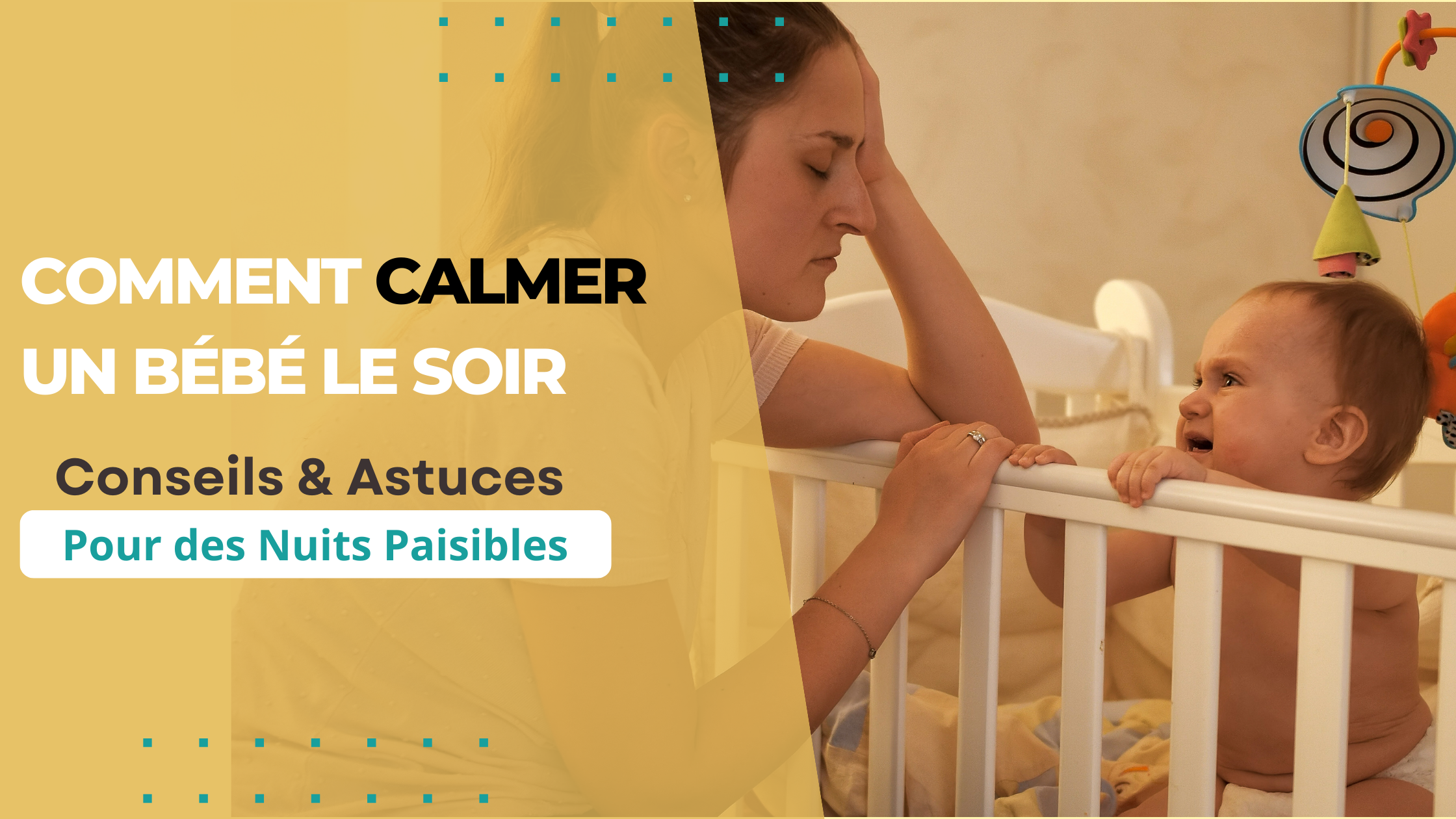
When it's time to put your baby down for the night, choosing the right clothes is essential to ensure their comfort and safety. But how do you know what to wear? In this article, we'll give you some practical tips on how to dress your baby based on the room temperature, the season, and their individual needs.
1. Consider the room temperature
The first step in dressing your baby at night is to consider the temperature of the room where he sleeps. A room that is too hot or too cold can disrupt his sleep and cause discomfort. According to pediatricians' recommendations, the ideal temperature for a baby's room is generally between 18 and 21 degrees Celsius.
Below 17°C:
When the room temperature is below 17°C, it is important to keep your baby warm to prevent him or her from feeling discomfort due to the cold.
To do this, dress him in warm pajamas, preferably long-sleeved and with covered legs. Also opt for a lined and quilted sleeping bag to ensure additional thermal insulation. You can also add socks and a hat to keep his extremities warm.

Between 18 and 25°C:
Within this temperature range, your goal is to keep your baby comfortable without being too hot or too cold.
Choose lightweight, breathable cotton clothing, such as a long-sleeved bodysuit with cotton pants. A lightweight, seasonally appropriate sleeping bag can be used to keep him comfortably covered without the risk of overheating. Be sure to check the weather and adjust clothing layers accordingly if the room temperature fluctuates during the night.
Above 26°C:
In hot weather, your priority is to ensure that your baby does not overheat while sleeping.
Opt for lightweight, airy clothing, such as a short-sleeved bodysuit or simple, lightweight cotton pajamas. A lightweight, sleeveless sleeping bag can be used to provide light coverage while still allowing your baby to stay cool. Make sure the room is well-ventilated and consider using a fan to help maintain a comfortable temperature in your baby's room.
2. Some signs to watch for to know if your baby is hot or cold

To determine if your baby is hot or cold, it is important to carefully monitor certain signs. By observing these clues, you will be able to adjust his clothes and ensure his comfort:
- Body temperature: Feel your baby's neck, back, or back to see if it's warm or cold. If his skin feels warm and clammy, he may be too hot. If it feels cool or cold, he may be cold.
- Excessive sweating: If your baby is sweating a lot, it may be a sign that he is too hot and needs to remove a layer of clothing.
- Fussiness or fussiness : Babies can become fussy or fussy when they are too hot or too cold. If your baby seems uncomfortable or fussy while sleeping, this may indicate that he or she is uncomfortable due to the temperature.
- Breathing and heart rate: Rapid breathing or a high heart rate can be signs that your baby is too hot. Also be sure to check if he is breathing comfortably and regularly.
- Skin color : Red or warm skin may indicate that your baby is too hot, while pale or blue skin may indicate that he or she is cold.
- Disturbed sleep : If your baby has trouble falling asleep or wakes up frequently at night, it may be due to an uncomfortable temperature in his room.
3. Some tips for choosing your baby's nightwear

When choosing your baby's sleepwear, here are some tips to consider to ensure optimal comfort:
-
Choose natural materials: Opt for fabrics like cotton, linen or bamboo, which are soft and breathable. These materials allow your baby's delicate skin to breathe and reduce the risk of skin irritation.
-
Opt for loose clothing: Choose clothing that does not restrict your baby's movements and allows him to move freely while sleeping. Clothing that is too tight can be uncomfortable and disrupt your baby's sleep.
-
Avoid over-dressing: It is important not to overload your baby with too many clothes, especially in hot weather. Over-dressing can cause your baby to overheat and disrupt sleep. Opt for lightweight clothing that is appropriate for the room temperature.
4. Ensure baby's comfort
In addition to choosing the right clothes for your baby, there are several other aspects to consider to ensure their comfort while sleeping:
-
Clean and comfortable bedding: Make sure your baby's mattress and bedding are clean, dry and comfortable. Use quality sheets, blankets and mattress covers that do not pose risks of allergies or skin irritations.
-
Eliminate Hazards: Remove any items from your baby's bedding that could pose a suffocation hazard, such as pillows, comforters, heavy blankets, and stuffed animals. It's a good idea to keep your baby's bed simple and clutter-free to reduce the risk of accidents while they sleep.
-
Ensure good ventilation: Make sure your baby's room is well ventilated to maintain a comfortable temperature and avoid drafts. Use a humidifier or dehumidifier if necessary to regulate the air humidity and make sure the room is neither too humid nor too dry.
-
Control the light: Make sure your baby's room is dark enough at night to promote restful sleep. Use blackout curtains or blinds to block outside light and create a sleep-friendly environment.
5. Monitor the room temperature regularly
To ensure your baby sleeps comfortably and safely, regularly monitoring the temperature in your baby's room is an important practice to ensure optimal comfort while sleeping. Here's why this is essential:
-
Maintain a comfortable temperature: By monitoring the room temperature, you can ensure that it remains within the ideal range for your baby to sleep, usually between 18 and 21 degrees Celsius. If the temperature fluctuates, adjust your baby's clothing accordingly to avoid them being too hot or too cold.
-
Preventing Overheating: Too much room temperature can cause your baby to overheat, which can disrupt sleep and increase the risk of Sudden Infant Death Syndrome (SIDS). By regularly monitoring the temperature, you can take steps to reduce the risk of overheating and keep your baby comfortable and safe.
-
Use temperature monitoring cameras: In addition to a traditional thermometer, you may also want to consider installing temperature monitoring cameras in your baby’s room. These cameras are equipped with temperature sensors that detect changes in the temperature in the room. This allows you to monitor the temperature continuously and receive alerts if there are significant changes, allowing you to react quickly to adjust your baby’s sleeping conditions.
Dressing your baby for the night requires taking into account several factors, including the room temperature, the season, and your baby's individual comfort preferences. By choosing quality clothing, avoiding diapers, and regularly monitoring the room temperature, you can help your baby have a peaceful and restful night.




Leave a comment
This site is protected by hCaptcha and the hCaptcha Privacy Policy and Terms of Service apply.